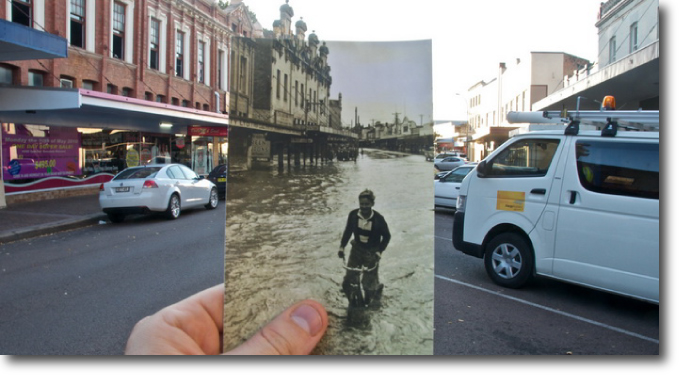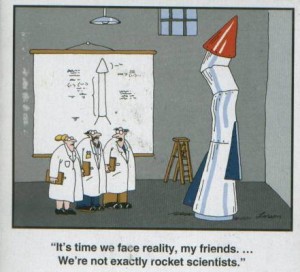In the past few weeks, the blogosphere has been abuzz about various philosophies for choosing whom to follow on Twitter. Mitch Joel and Mark Schaefer recently dueled on their opposing approaches – be selective in who you follow or follow (mostly) everyone. Gini Dietrich also weighed into the debate.
Although people are quick to point out that there are no “rules” in social media, there are certainly best practices. Determining how to use the tools to your benefit is certainly up to you and what best aligns with your social media goals.
Because I use social media to develop relationships and to build business, I follow most people who follow me. However, I don’t use an automated system to follow people back. I look through every person who follows me. That’s right, I take a minute or two to look through the profile of every person who decides to follow me. I think it’s important to get to know the people who care what I have to say online. And most times, I will follow people back.
But there are also some reasons I absolutely will not follow someone. For instance, I will not follow you if:
- You don’t have an avatar. An avatar is the picture or image associated with your account. If you have the Twitter goose egg there instead, I won’t follow you. I want to see the person or business behind the account.
- Your bio is incomplete. The bio is only 140 characters. Take a few minutes to say a little bit about yourself. If you leave this blank, why should I get to know you?
- Your avatar is a picture of money. I avoid get rich quick Tweeters like the plague. If you are all about “making money online” (the spammy way), I won’t come near you. Sorry.
- Your avatar is something even less savory. Twitter has cleaned up the spam quite a bit, but for a while, it was common to get followers with some inappropriate photos. Those followers, I block…and fast.
- You’ve never tweeted. It’s amazing to me how many people open up an account and let it sit. Don’t let analysis paralysis keep you from tweeting. Put yourself out there and say hello. If you don’t say anything, why should I follow?
- You’ve never replied to your followers. For me, the point of twitter is to build relationships. If you’ve never @replied to your followers, it shows me you don’t care about a two-way conversation. There are some exceptions to this rule, but generally speaking, I want to connect with people who are going to talk back.
- You only promote yourself. Plenty of people simply use Twitter to promote their own stuff non-stop. It almost turns into a 24/7 RSS feed of their blog. If that’s your thing, that’s fine, but I’m not tuning in.
One sure-fire way to guarantee I’ll follow you back? Engage with me. One of the main reasons I’m on Twitter is to build relationships. It’s amazing how many wonderful people I have made in-person relationships with all because we struck up a conversation online.
So, if you want to connect with me or anyone else on Twitter, say hello. Chances are, the person will talk right back.
What are the reasons you choose not to follow someone? Is there anything we should add to the list?
Laura Click

 It wasn’t until months later that I was actually told that this quote was from Helen Keller, one of the most famous disabled individuals ever and avid advocate for the blind and other disenfranchised groups. I will not repeat her biography here, but you can review her entire story through her
It wasn’t until months later that I was actually told that this quote was from Helen Keller, one of the most famous disabled individuals ever and avid advocate for the blind and other disenfranchised groups. I will not repeat her biography here, but you can review her entire story through her  Customer Loyalty programs have been around for more than a century and marketing managers have used them very effectively for rewarding loyal customer behavior, especially repeat purchase. According to
Customer Loyalty programs have been around for more than a century and marketing managers have used them very effectively for rewarding loyal customer behavior, especially repeat purchase. According to  Few people understand the constant pressure that the corporate social strategist is faced with. On any given day, the pressure can include internal challenges such as culture change, demands on proving the worth of programs, program development and execution, vague understanding of the role by some colleagues, the necessity of integrating the function throughout the enterprise, as well as external demands such as interview requests and a constant barrage of questions via email, Facebook and Twitter.
Few people understand the constant pressure that the corporate social strategist is faced with. On any given day, the pressure can include internal challenges such as culture change, demands on proving the worth of programs, program development and execution, vague understanding of the role by some colleagues, the necessity of integrating the function throughout the enterprise, as well as external demands such as interview requests and a constant barrage of questions via email, Facebook and Twitter. I have been in some interesting debates recently on Twitter in chats such as #mmchat and #techchat on whether or not Social Media is just another channel. While I disagree with almost every word these particular people type, I wanted to make sure this topic was approached objectively… well, somewhat objectively.
I have been in some interesting debates recently on Twitter in chats such as #mmchat and #techchat on whether or not Social Media is just another channel. While I disagree with almost every word these particular people type, I wanted to make sure this topic was approached objectively… well, somewhat objectively. In this fragile economy, many companies no longer have the budgets to throw at big-name ‘multinationals’. A business model based on creating a witty concept and buying media space to disseminate it no longer ensures that the message is heard. Consumers are so overwhelmed by an abundance of information on myriad platforms that agencies must purposefully engage with their target market, whether it be through their cell phones, iPads, or traditional print media. The traditional ad agency thrived on its ability to produce ideas; but ideas are no longer enough. Edward Boches, of marketing blog Creativity Unbound, sums up the challenge perfectly: “we can no longer buy attention”.
In this fragile economy, many companies no longer have the budgets to throw at big-name ‘multinationals’. A business model based on creating a witty concept and buying media space to disseminate it no longer ensures that the message is heard. Consumers are so overwhelmed by an abundance of information on myriad platforms that agencies must purposefully engage with their target market, whether it be through their cell phones, iPads, or traditional print media. The traditional ad agency thrived on its ability to produce ideas; but ideas are no longer enough. Edward Boches, of marketing blog Creativity Unbound, sums up the challenge perfectly: “we can no longer buy attention”.